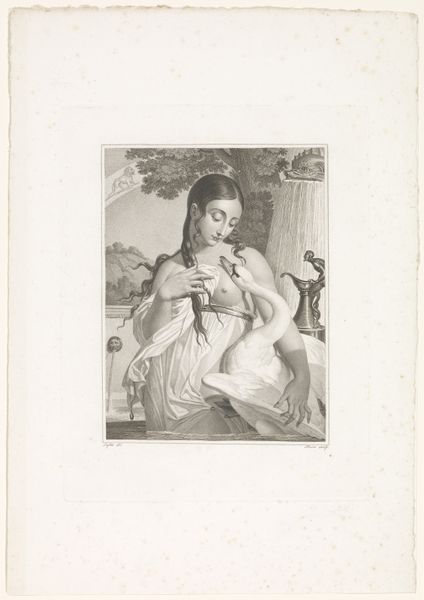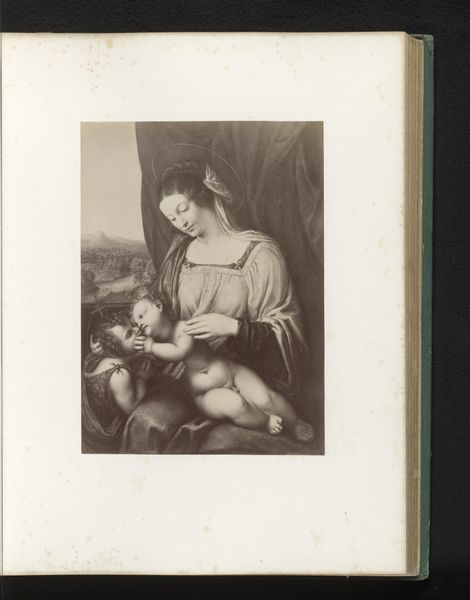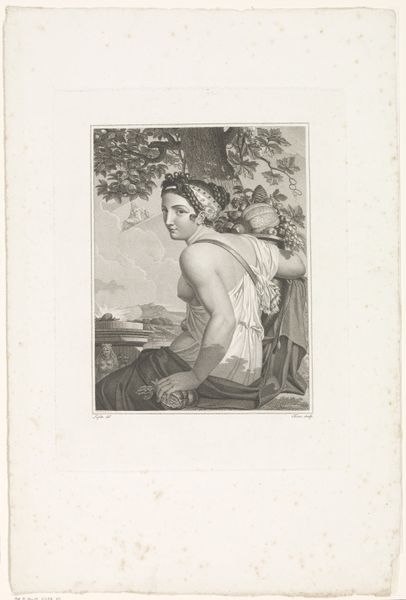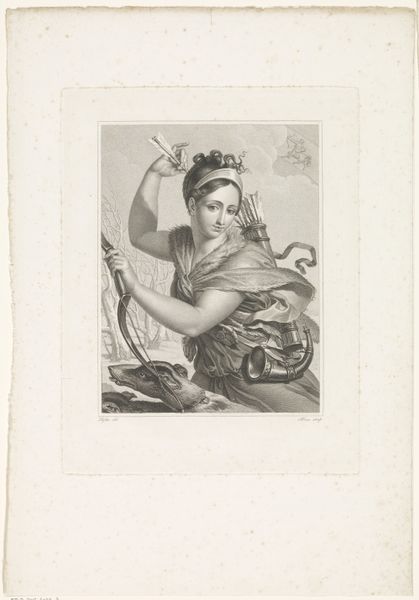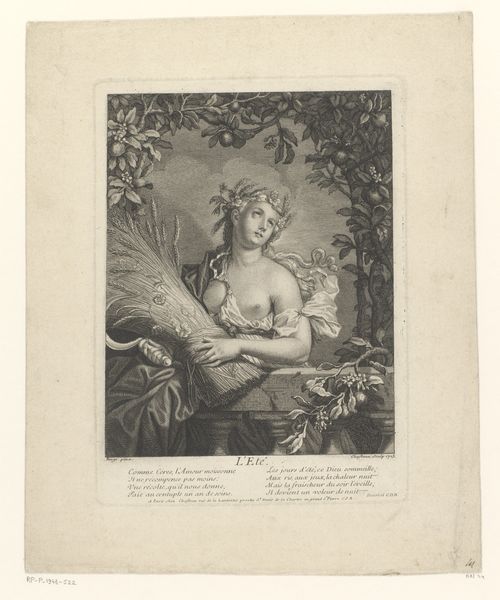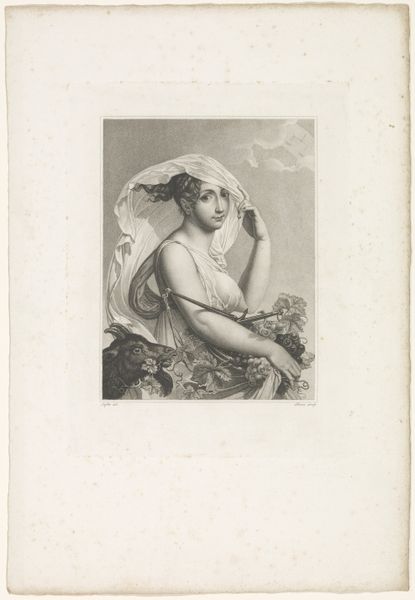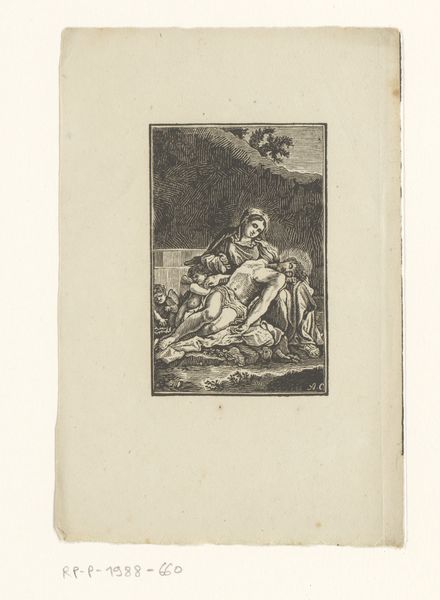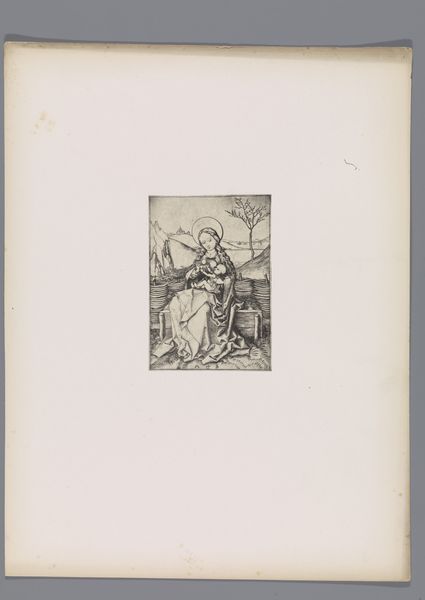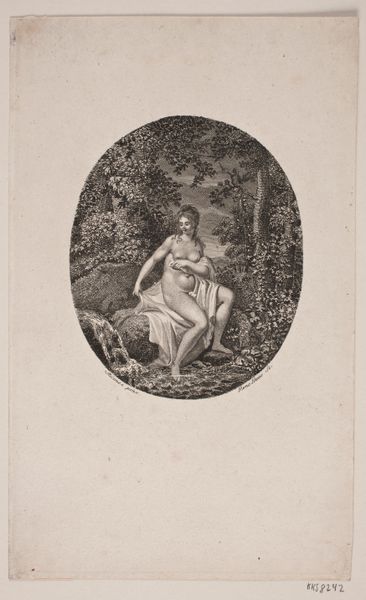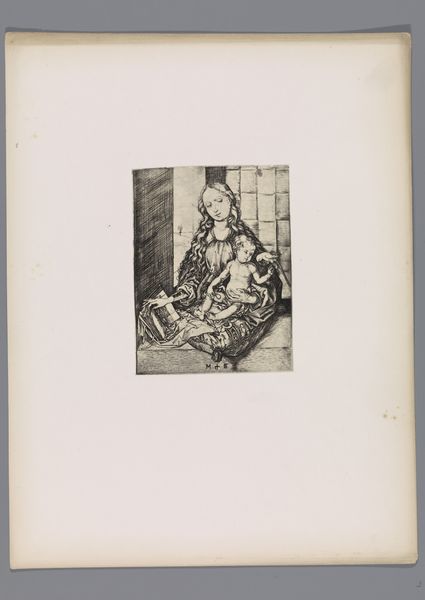
print, engraving
#
neoclacissism
#
aged paper
#
light pencil work
#
allegory
# print
#
light coloured
#
old engraving style
#
landscape
#
white palette
#
figuration
#
history-painting
#
engraving
Dimensions: height 350 mm, width 263 mm
Copyright: Rijks Museum: Open Domain
Editor: So here we have "Brumaire (22 oktober – 20 november)," a print by Salvatore Tresca created between 1792 and 1794. It's very delicate, almost ethereal with its light palette and the style, an old engraving style, feels quite formal. What is your interpretation of this work? Curator: It whispers to me of history, you know? "Brumaire" refers to a month in the French Republican calendar – autumn, mists, melancholy. Look closer, she isn't just holding a lamb; she embodies an allegorical figure. Is she carrying faggots on her head, a sign of sustenance being provided even during barren times, perhaps? Editor: Interesting. I was focused on the serene mood of the central figure and completely missed the details in the background with the faggots and the clouds! The aged paper lends a certain gravitas too. Curator: Gravitas, precisely! This Neoclassical piece isn't merely decorative; it's rooted in political upheaval. Tresca lived during tumultuous times; history painting had purpose, an idea. Ask yourself why she appears so mournful. Is she lamenting for the aristocracy as the French republic begins? Editor: That shifts my perspective completely. The lamb isn't just cute; it's symbolic! Maybe of innocence, perhaps a world turned upside down, considering how revolutionary sentiments challenged everything held sacred prior to that. Curator: Exactly! Her sadness mirrors a world undergoing dramatic transformation. Tresca uses subtle symbolism that encourages deeper thought and a better understanding of its story. What started as just a pretty shepherdess is layered in social meaning. Now do you feel different viewing the picture now than you did the very first time, when first experiencing it? Editor: I certainly do. There's a poignant tension that I appreciate all the more now. Thanks for pointing that out. Curator: Anytime. Isn’t it something when a seemingly simple image unfolds with historical nuance when you know more to look at with your understanding? It changes everything doesn’t it?
Comments
No comments
Be the first to comment and join the conversation on the ultimate creative platform.

